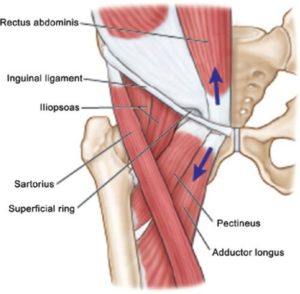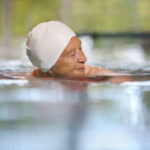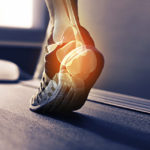 The new trend is to lump all of the injuries that present pain in the lower abdominal area and/or the top of the inner thigh, together and and mislabel it a hernia.
These injuries are common in sports where sudden starts, stops, change of direction, or traumatic falls and accidents occur. The injury is sustained in one muscle; but when left unchecked, it leads to the break down of surrounding structures.
The key to resolving this mislabeled condition is to find, through careful physical examination, the exact location of the muscle injury, and treat it before there is a more extensive weakening and break down of the surrounding injuries. If the damage has already spread to surrounding muscles because the athlete continued to participate in the sport while their injury was misdiagnosed and/or mistreated, then treatment must include all damaged tissues.
The approach to treating these injuries is really no different than any other muscle injury; and I suspect it is only mistreated because clinicians lack the palpation skills, patience, or knowledge to find the exact injury site. After careful testing and palpation the inflamed area is located and treated for inflammation, then for scar tissue, and advanced through stretching exercises and re-strengthening. The critical path to resolving these injuries and preventing reoccurrence is to treat the whole athlete by correcting muscle imbalances, leg length discrepancies, and alignment issues for a successful return to sport, better than they were before!
If you have a tough injury give us a call and we will sort it out. 310-656-8600
The new trend is to lump all of the injuries that present pain in the lower abdominal area and/or the top of the inner thigh, together and and mislabel it a hernia.
These injuries are common in sports where sudden starts, stops, change of direction, or traumatic falls and accidents occur. The injury is sustained in one muscle; but when left unchecked, it leads to the break down of surrounding structures.
The key to resolving this mislabeled condition is to find, through careful physical examination, the exact location of the muscle injury, and treat it before there is a more extensive weakening and break down of the surrounding injuries. If the damage has already spread to surrounding muscles because the athlete continued to participate in the sport while their injury was misdiagnosed and/or mistreated, then treatment must include all damaged tissues.
The approach to treating these injuries is really no different than any other muscle injury; and I suspect it is only mistreated because clinicians lack the palpation skills, patience, or knowledge to find the exact injury site. After careful testing and palpation the inflamed area is located and treated for inflammation, then for scar tissue, and advanced through stretching exercises and re-strengthening. The critical path to resolving these injuries and preventing reoccurrence is to treat the whole athlete by correcting muscle imbalances, leg length discrepancies, and alignment issues for a successful return to sport, better than they were before!
If you have a tough injury give us a call and we will sort it out. 310-656-8600WHAT IS A SPORTS HERNIA
By CEO Robert Forster, PT
This week’s client testimonial is from one of our Forster PT clients. He is a middle aged competitive power lifter who suffered a catastrophic groin injury, some times called a sports hernia. He was told his condition would require surgery to heal and allow him to return to weight lifting at his previous performance level. By directing treatment to the exact location of the injured muscles and providing some immediate pain relief without surgery we convinced him that his injury was 100% fixable with a smart PT program. For me and my staff Paul became the model client who follows all our rehab directives and proves our treatment paradigm works. Read of his triumphant return to power lifting below.
What did Paul hurt? There is a relatively new name for groin pain in the sportsmedicine lexicon: sports hernia. It seems the necessity to create a new name for a common athletic injury speaks to a current lack of understanding among clinicians for this difficult-to-treat injury. The confusion starts with the name. This newly popularized term “sports hernia” does not fit the common definition of a “hernia,” where an organ or soft tissue is poking through a break in the abdominal muscle wall.
 The new trend is to lump all of the injuries that present pain in the lower abdominal area and/or the top of the inner thigh, together and and mislabel it a hernia.
These injuries are common in sports where sudden starts, stops, change of direction, or traumatic falls and accidents occur. The injury is sustained in one muscle; but when left unchecked, it leads to the break down of surrounding structures.
The key to resolving this mislabeled condition is to find, through careful physical examination, the exact location of the muscle injury, and treat it before there is a more extensive weakening and break down of the surrounding injuries. If the damage has already spread to surrounding muscles because the athlete continued to participate in the sport while their injury was misdiagnosed and/or mistreated, then treatment must include all damaged tissues.
The approach to treating these injuries is really no different than any other muscle injury; and I suspect it is only mistreated because clinicians lack the palpation skills, patience, or knowledge to find the exact injury site. After careful testing and palpation the inflamed area is located and treated for inflammation, then for scar tissue, and advanced through stretching exercises and re-strengthening. The critical path to resolving these injuries and preventing reoccurrence is to treat the whole athlete by correcting muscle imbalances, leg length discrepancies, and alignment issues for a successful return to sport, better than they were before!
If you have a tough injury give us a call and we will sort it out. 310-656-8600
The new trend is to lump all of the injuries that present pain in the lower abdominal area and/or the top of the inner thigh, together and and mislabel it a hernia.
These injuries are common in sports where sudden starts, stops, change of direction, or traumatic falls and accidents occur. The injury is sustained in one muscle; but when left unchecked, it leads to the break down of surrounding structures.
The key to resolving this mislabeled condition is to find, through careful physical examination, the exact location of the muscle injury, and treat it before there is a more extensive weakening and break down of the surrounding injuries. If the damage has already spread to surrounding muscles because the athlete continued to participate in the sport while their injury was misdiagnosed and/or mistreated, then treatment must include all damaged tissues.
The approach to treating these injuries is really no different than any other muscle injury; and I suspect it is only mistreated because clinicians lack the palpation skills, patience, or knowledge to find the exact injury site. After careful testing and palpation the inflamed area is located and treated for inflammation, then for scar tissue, and advanced through stretching exercises and re-strengthening. The critical path to resolving these injuries and preventing reoccurrence is to treat the whole athlete by correcting muscle imbalances, leg length discrepancies, and alignment issues for a successful return to sport, better than they were before!
If you have a tough injury give us a call and we will sort it out. 310-656-8600
 The new trend is to lump all of the injuries that present pain in the lower abdominal area and/or the top of the inner thigh, together and and mislabel it a hernia.
These injuries are common in sports where sudden starts, stops, change of direction, or traumatic falls and accidents occur. The injury is sustained in one muscle; but when left unchecked, it leads to the break down of surrounding structures.
The key to resolving this mislabeled condition is to find, through careful physical examination, the exact location of the muscle injury, and treat it before there is a more extensive weakening and break down of the surrounding injuries. If the damage has already spread to surrounding muscles because the athlete continued to participate in the sport while their injury was misdiagnosed and/or mistreated, then treatment must include all damaged tissues.
The approach to treating these injuries is really no different than any other muscle injury; and I suspect it is only mistreated because clinicians lack the palpation skills, patience, or knowledge to find the exact injury site. After careful testing and palpation the inflamed area is located and treated for inflammation, then for scar tissue, and advanced through stretching exercises and re-strengthening. The critical path to resolving these injuries and preventing reoccurrence is to treat the whole athlete by correcting muscle imbalances, leg length discrepancies, and alignment issues for a successful return to sport, better than they were before!
If you have a tough injury give us a call and we will sort it out. 310-656-8600
The new trend is to lump all of the injuries that present pain in the lower abdominal area and/or the top of the inner thigh, together and and mislabel it a hernia.
These injuries are common in sports where sudden starts, stops, change of direction, or traumatic falls and accidents occur. The injury is sustained in one muscle; but when left unchecked, it leads to the break down of surrounding structures.
The key to resolving this mislabeled condition is to find, through careful physical examination, the exact location of the muscle injury, and treat it before there is a more extensive weakening and break down of the surrounding injuries. If the damage has already spread to surrounding muscles because the athlete continued to participate in the sport while their injury was misdiagnosed and/or mistreated, then treatment must include all damaged tissues.
The approach to treating these injuries is really no different than any other muscle injury; and I suspect it is only mistreated because clinicians lack the palpation skills, patience, or knowledge to find the exact injury site. After careful testing and palpation the inflamed area is located and treated for inflammation, then for scar tissue, and advanced through stretching exercises and re-strengthening. The critical path to resolving these injuries and preventing reoccurrence is to treat the whole athlete by correcting muscle imbalances, leg length discrepancies, and alignment issues for a successful return to sport, better than they were before!
If you have a tough injury give us a call and we will sort it out. 310-656-8600







